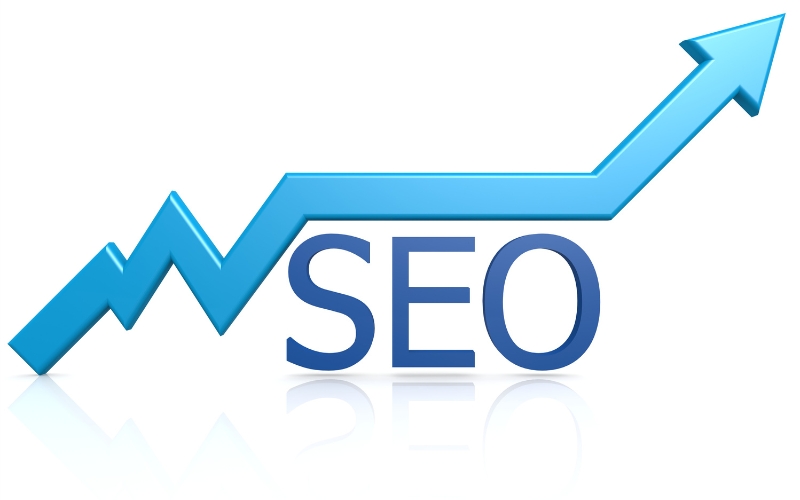Website speed is no longer just a technical consideration; it’s a crucial factor that influences both user experience and search engine ranking. In an era where users expect immediate access to information, a slow-loading website can quickly lead to frustration, high bounce rates, and missed opportunities for engagement. Search engines, particularly Google, recognize the importance of website speed in delivering a positive user experience and have incorporated it into their ranking algorithms. In this article, we will explore the relationship between website speed and user experience, discuss how search engines evaluate and use page speed as a ranking factor, and provide practical strategies for improving website speed to enhance SEO performance.
The Relationship Between Page Load Time and User Experience

Website speed is one of the most crucial factors that determine the user experience of a website. In today’s fast-paced digital world, users expect websites to load quickly, and they aren’t likely to wait long if a page takes more than a few seconds to load. The time it takes for a page to load has a direct impact on how users interact with the site, affecting everything from user engagement to bounce rates and overall satisfaction. A fast-loading website not only improves user experience but can also significantly boost retention and conversions.
Impact on User Engagement
User engagement is a key metric that reflects how much time a visitor spends interacting with a website. Websites that load quickly provide a smoother, more enjoyable experience for users, encouraging them to engage with the content. When a page loads in a timely manner, users are more likely to explore additional pages, click on links, and interact with elements such as forms, videos, and buttons.
On the other hand, slow-loading websites cause frustration and impatience. As loading times increase, users tend to lose interest, leading to lower engagement levels. For example, a delay of even one second can result in a noticeable drop in user interaction, as visitors are more likely to abandon the page or navigate away to another site that loads faster. According to research, 47% of consumers expect a webpage to load in two seconds or less, and every additional second can reduce user engagement significantly.
Influence on Bounce Rates
Bounce rate refers to the percentage of visitors who leave a website after viewing only one page. Slow page load times are one of the leading causes of high bounce rates. If a website takes too long to load, users are more likely to abandon it before they even see its content, leading to an increase in bounce rates. This is particularly problematic for websites that rely on organic traffic from search engines, as search engines often associate high bounce rates with poor user experience.
A website’s bounce rate can be significantly reduced by optimizing page load speed. Visitors who experience a fast-loading website are more likely to stay on the page, explore further, and convert into customers or leads. When users find what they’re looking for quickly, they are more likely to trust the website, return for future visits, and share it with others. Consequently, a fast website can enhance brand credibility and foster positive long-term relationships with users.
Overall Satisfaction and Retention
Overall user satisfaction is greatly influenced by how quickly a website loads. A website that provides a seamless and fast browsing experience is more likely to leave a positive impression on visitors. When users are satisfied with the speed of a site, they are more likely to return for future visits, increasing the site’s overall retention rate. On the other hand, slow-loading websites tend to frustrate users, leading to negative experiences that diminish the likelihood of return visits.
Moreover, a fast-loading website encourages trust. Users are less likely to abandon a website that meets their needs efficiently, increasing their likelihood of completing desired actions, such as making a purchase, subscribing to a newsletter, or filling out a contact form. In a competitive digital environment, where there are numerous alternatives, a fast website is a valuable asset in retaining users and converting them into loyal customers.
In conclusion, website speed plays a pivotal role in shaping the user experience. A fast-loading site enhances user engagement, reduces bounce rates, and improves overall satisfaction, all of which contribute to higher user retention and better long-term success. Therefore, website owners and businesses should prioritize website speed optimization as part of their overall user experience strategy to ensure they stay competitive in the digital space.
How Search Engines Evaluate Website Speed for Ranking

Website speed has become an essential factor in search engine optimization (SEO), with major search engines, particularly Google, incorporating page speed into their ranking algorithms. This change has been driven by the increasing importance of providing users with fast and efficient browsing experiences. As search engines aim to deliver the best possible results for their users, they prioritize websites that load quickly, ensuring that users spend less time waiting and more time interacting with content. This is why website speed is now an integral part of SEO strategies.
Page Speed as a Ranking Factor
Google has long emphasized the importance of a website’s load time in its ranking algorithms. A faster website not only enhances user experience but also increases the likelihood of higher rankings on search engine result pages (SERPs). Google considers page speed as a direct ranking factor because it contributes to a better user experience. Slow-loading websites tend to have higher bounce rates and lower user engagement, which signals to Google that the site may not be as valuable for users. As a result, such websites are likely to rank lower compared to their faster counterparts.
In 2010, Google confirmed that page speed is a ranking factor for desktop searches, and in 2018, they made a similar announcement for mobile searches. This made it even more important for businesses to optimize their websites not just for desktop performance but also for mobile devices, as mobile traffic continues to grow. With the launch of the mobile-first indexing policy, where Google primarily uses the mobile version of a website for ranking, ensuring fast load times on mobile devices has become even more crucial for SEO success.
Tools to Evaluate Website Speed
Several tools are available to help website owners and SEO professionals evaluate the speed of their websites and identify areas for improvement. Among the most popular tools is Google PageSpeed Insights, which provides an in-depth analysis of both desktop and mobile performance. PageSpeed Insights analyzes various factors such as server response time, image sizes, JavaScript and CSS optimization, and caching techniques to provide specific recommendations for improving load times. It assigns a score to each page, indicating how well it performs in terms of speed, and suggests actionable steps to make the website faster.
Another valuable tool provided by Google is Core Web Vitals, which is a set of specific metrics designed to measure user experience regarding website performance. These metrics focus on three key aspects of page load time: Largest Contentful Paint (LCP), First Input Delay (FID), and Cumulative Layout Shift (CLS). LCP measures how long it takes for the largest element on the page (usually an image or video) to load, FID evaluates the responsiveness of the page when a user first interacts with it, and CLS measures the visual stability of a page as it loads. These metrics offer a deeper understanding of how well a website delivers a positive experience to its users and help search engines determine if the site should rank higher.
The Importance of User Experience Signals
Search engines like Google use page speed as a signal to determine whether a website offers a good user experience. Slow websites can frustrate users, leading to higher bounce rates and reduced interaction with the content. When search engines notice that users are quickly leaving a website due to slow performance, they interpret this as a negative signal, impacting the site’s rankings. In contrast, fast-loading websites tend to retain users, encourage more interaction, and receive better engagement signals, such as time spent on the page or social shares. These positive signals are recognized by search engines and contribute to higher rankings.
Moreover, page speed has a direct impact on mobile user experience, and since mobile traffic continues to grow, it’s essential to optimize websites for both desktop and mobile performance. Google’s mobile-first indexing means that the mobile version of your website is considered the primary version for ranking purposes. If your website is slow to load on mobile devices, your ranking could be significantly impacted.
In conclusion, search engines evaluate website speed as an important ranking factor because it directly influences user experience. Tools like Google PageSpeed Insights and Core Web Vitals help website owners and SEO professionals assess and improve page load times, ensuring that websites perform well both on desktop and mobile devices. By focusing on website speed optimization, businesses can enhance user experience, improve engagement, and ultimately boost their search engine rankings.
Practical Strategies to Improve Website Speed for Better SEO

Improving website speed is crucial for both user experience and SEO. A fast-loading website not only enhances engagement and reduces bounce rates but also helps to boost rankings on search engine result pages (SERPs). Google and other search engines prioritize fast websites because they provide better user experiences. There are several actionable strategies that site owners can implement to optimize website speed and improve SEO.
1. Optimize Images
One of the most significant factors that slow down a website is large, unoptimized images. Images are often the largest files on a page and can contribute substantially to slower load times. To improve website speed, it’s essential to ensure that images are appropriately sized and compressed without sacrificing quality.
- Resize images: Ensure that the dimensions of the images match the size they will be displayed on the page. Avoid using larger images than necessary.
- Use modern file formats: Consider using modern image formats such as WebP, which provides better compression and quality than traditional formats like JPEG and PNG.
- Compress images: Use image compression tools like TinyPNG, ImageOptim, or built-in tools in CMS platforms to reduce file sizes without noticeably losing quality.
- Lazy loading: Implement lazy loading, which ensures that images are only loaded when they come into view as the user scrolls down the page. This reduces initial load time and improves performance, particularly on image-heavy pages.
2. Leverage Browser Caching
Browser caching allows frequently accessed resources (such as images, JavaScript, and CSS files) to be stored locally in the user’s browser. This way, when a user revisits your website, the browser can load these resources from the cache rather than fetching them from the server again, speeding up the load time.
To leverage browser caching, site owners can:
- Set expiration dates for static resources such as images, CSS, and JavaScript files. This will allow the browser to store these files for a specified period (e.g., a week, a month, or even a year).
- Use cache control headers to define how long resources should be cached. For instance, you can set longer cache times for static files that don’t change often (like logos or background images) and shorter cache times for dynamic content.
3. Use a Content Delivery Network (CDN)
A Content Delivery Network (CDN) is a network of servers located in various geographic regions. CDNs store copies of your website’s static files, such as images, CSS, and JavaScript, and deliver them from the server closest to the user. This reduces latency and speeds up the loading time of the website, especially for users located far from your website’s primary server.
CDNs work by distributing traffic across multiple servers, which also helps reduce the strain on a single server, particularly during high traffic periods. Some popular CDN services include Cloudflare, Amazon CloudFront, and Akamai. Implementing a CDN is an effective way to speed up website performance for global audiences and improve SEO.
4. Minify and Combine Files
Large CSS and JavaScript files can significantly slow down website speed. One way to improve load times is to minify these files, which removes unnecessary spaces, comments, and formatting without affecting their functionality. Minification can reduce the file size and help the browser load the site faster.
Additionally, combining multiple CSS or JavaScript files into one file reduces the number of HTTP requests required to load the page, further improving load times. There are several tools and plugins available for minifying and combining files, such as UglifyJS (for JavaScript) and CSSMin (for CSS).
5. Enable GZIP Compression
GZIP compression is a method of reducing the size of files sent from your server to the user’s browser. It works by compressing text-based files like HTML, CSS, and JavaScript before they are transmitted. This significantly reduces the amount of data that needs to be transferred, speeding up the load time.
To enable GZIP compression on your website, you can add a few lines of code to your server’s configuration file or use plugins available in platforms like WordPress. Most modern browsers support GZIP compression, and enabling it can make a noticeable difference in your site’s performance.
6. Optimize CSS and JavaScript Delivery
Blocking JavaScript and CSS files can delay page rendering, especially if they are loaded synchronously. To improve speed, consider optimizing the way JavaScript and CSS are delivered.
- Async and defer JavaScript: Use the “async” or “defer” attributes in your script tags to load JavaScript files asynchronously, meaning they won’t block the rendering of the page.
- Critical CSS: Inline critical CSS (the CSS needed to render above-the-fold content) into the HTML, so the browser doesn’t need to wait for external CSS files to load before displaying content.
7. Minimize HTTP Requests
Every element on a webpage, such as images, scripts, and stylesheets, requires an HTTP request to the server. Reducing the number of HTTP requests can significantly speed up your website. You can achieve this by:
- Combining files (as mentioned above).
- Using CSS sprites: Combine multiple small images into one image to reduce the number of requests needed to load them.
- Eliminating unnecessary plugins: Disable or remove plugins that add unnecessary code and extra HTTP requests.
Conclusion
Improving website speed is essential not only for providing a better user experience but also for enhancing SEO. By implementing practical strategies such as optimizing images, leveraging browser caching, using a CDN, minifying files, enabling GZIP compression, and optimizing CSS/JavaScript delivery, website owners can significantly improve load times. These improvements contribute to a better user experience, reduced bounce rates, and higher rankings on search engine result pages, ultimately driving more traffic and improving conversions.
Conclusion
In conclusion, the speed at which your website loads plays a significant role in both user satisfaction and SEO success. A faster website leads to better user engagement, reduced bounce rates, and higher retention rates, while slow-loading pages can drive visitors away and harm your search rankings. By understanding how search engines assess page speed and implementing practical strategies such as image optimization, browser caching, and the use of Content Delivery Networks (CDNs), you can improve your site’s performance and boost its position on search engine results pages. Prioritizing website speed not only benefits your users but also enhances your overall SEO strategy, ensuring better visibility, increased traffic, and improved conversion rates.

